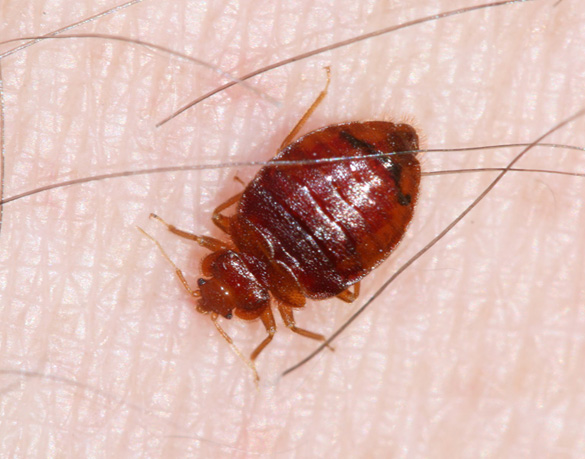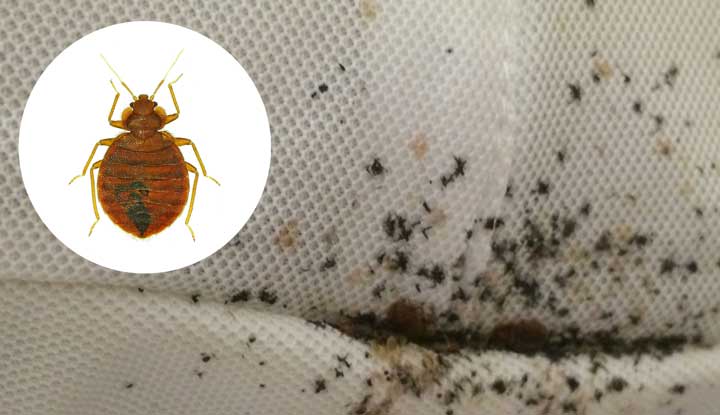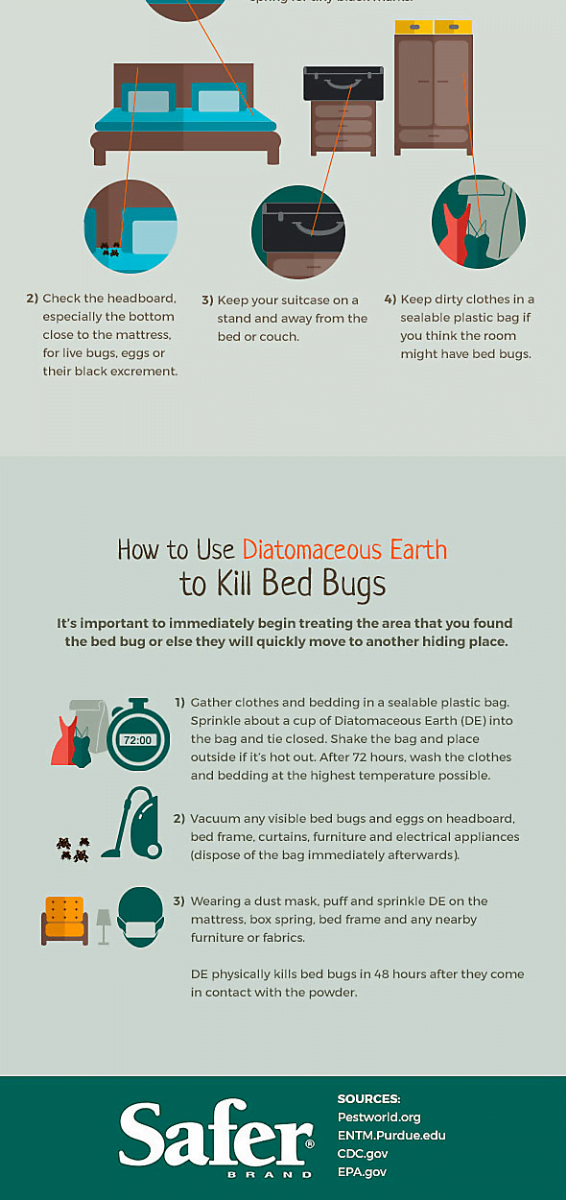To treat a bed frame for bed bugs, thoroughly vacuum the frame and apply a bed bug spray or powder. Encase the mattress and box springs in bed bug-proof covers to prevent further infestations.
Dealing with bed bugs can be a daunting challenge, particularly when they’ve taken up residence in a bed frame. These elusive pests are masters at hiding in cracks and crevices, making them difficult to eradicate. Ensuring the safety and cleanliness of your sleeping area starts with a comprehensive treatment of the bed frame.
Prompt action is crucial to prevent the spread of bed bugs to other areas of your home. The key to effective control is combining mechanical methods like vacuuming with targeted chemical treatments that are specifically designed for bed bug eradication. Properly encasing mattresses and box springs after treatment denies any lingering bugs the hiding spots they depend on, which is vital in cutting off their life cycle. Always remember to utilize bed bug-approved products that have been proven effective against these pests while ensuring they are safe for indoor use.
Recognizing Bed Bug Infestation
Discovering bed bug infestations in a home is distressing. Knowing what signs to look for is the first step in tackling this challenge. Here are key insights to identify these pesky invaders before moving on to treat your bed frame.
Signs And Symptoms
Visible bed bugs are the most obvious sign, yet small in size, they can be easy to miss. Look for these evidence:
- Blood stains on your sheets or pillowcases.
- Dark spots of bed bug excrement on bedding or walls.
- Fecal spots, egg shells, or shed skins in areas where bed bugs hide.
- An offensive, musty odor from the bugs’ scent glands.
Common Hiding Spots
Bed bugs are masters of hide-and-seek. Here are their favorite spots:
| Location | Details |
|---|---|
| Bed Frame & Mattress | Check seams, tags, and cracks |
| Bedside Furniture | Drawers and behind them |
| Wall Fixtures | Picture frames and electrical outlets |
| Soft Furnishings | Couches and cushioned chairs |
| Personal Items | Bags, nightstands, and clocks |
Regular inspections prevent widespread infestation. With vigilant monitoring and proper identification, bed bug infestations can be managed effectively.

Credit: citybugs.tamu.edu
Initial Preparations
Initial Preparations: The Critical First Step in Treating Bed Frames for Bed Bugs
Bed bug infestations can be stressful. Clean surroundings and washed beddings are keys to tackling them. This effort begins with initial preparations, which set the stage for effective treatment.
Cleaning Clutter
Begin by removing clutter around the bed. Clutter offers bed bugs hiding spots. Here are steps to declutter:
- Remove items that are not needed.
- Use plastic bags to seal belongings.
- Discard trash properly.
- Vacuum to capture stray bugs.
Washing Beddings
Clean beddings are crucial. Bed bugs and eggs can hide in fabrics. Steps to clean beddings:
- Strip the bed. Remove all linens.
- Wash in hot water. Aim for 60°C or higher.
- Dry on the highest setting for 30 minutes.
- Store cleaned items in sealed bags until reuse.
Dismantling The Bed Frame
Getting rid of bed bugs starts with taking apart the bed frame. Bed bugs hide in tiny spaces, so it’s key to break down the frame. This guide walks you through each step safely and effectively.
Safety Measures
Prep the area and wear gloves. You don’t want to spread bed bugs or get bitten. Clear a big space around the bed frame to manage parts easily. Use plastic bags for removed parts to contain potential bugs.
Step-by-step Disassembly
Follow these steps:
- Strip the bed. Remove sheets and mattress. Encase them in protective covers.
- Gather tools. Find screwdrivers or allen wrenches for your frame type.
- Start at the top. Take apart the headboard, then footboard, if present.
- Loosen side rails. Carefully unscrew or unhook them from the frame.
- Label parts. Use stickers or tape to mark pieces. It makes reassembly simpler.
- Inspect each part. Look for signs of bed bugs. Check screws and joints especially.
- Bag small parts. Nuts, bolts, and screws should go into separate bags. Seal them tight.
- Wipe everything down. Use alcohol or a non-toxic spray for bed bugs on each part.
Now, your bed frame is disassembled and ready for thorough bed bug treatment.

Credit: www.cowleys.com
Manual Removal Techniques
Treating a bed frame for bed bugs requires effective manual strategies. These bugs hide in tiny crevices, making them hard to remove. Yet, some hands-on approaches have proven successful in the quest to reclaim a bug-free bed. Each step is crucial. Understanding and applying these techniques can make a significant difference in managing a bed bug situation.
Vacuuming Strategies
Vacuum every corner of the bed frame rigorously. Bed bugs and their eggs might cling to the surface. Use a vacuum cleaner with a high-efficiency particulate air (HEPA) filter for the best results. Pay special attention to the following:
- Joints and creases in the bed frame
- Cracks in the headboard and footboard
- Screw holes and other small openings
| Location | Attention Level | Action |
|---|---|---|
| Joints and Creases | High | Vacuum thoroughly |
| Cracks | High | Use crevice tool |
| Screw Holes | Medium | Inspect and vacuum |
Once finished, seal the vacuum bag and dispose of it in an outside trash can.
Steaming For Deep Penetration
Steaming is an excellent way to reach areas that a vacuum can’t. A high-temperature steam cleaner can kill bed bugs and their eggs on contact. Follow these guidelines:
- Use a steamer with at least 200°F temperature capacity
- Move slowly over the bed frame
- Target the same areas suggested for vacuuming
Allow the bed frame to dry completely to prevent moisture damage or mold growth.
Remember, persistence is key. These techniques might need repetition for complete eradication of bed bugs.
Chemical Treatments
The war against bed bugs in your bed frame calls for strong allies, and chemical treatments can be powerful weapons. These potent formulas, designed to obliterate bed bugs on contact, need careful and strategic use. Safety always comes first, so don the gloves and eye protection before diving into the bug battlefield.
Choosing The Right Insecticide
Not every insecticide makes the cut when you’re targeting bed bugs. Look for products specifically labeled for bed bugs to ensure effectiveness. Pyrethroids and neonicotinoids are common warriors in this category. Organic options, like pyrethrins, are there for the eco-conscious fighter.
- Pyrethroids: Synthetic chemicals that mimic natural insecticidal properties.
- Neonicotinoids: Attack the bugs’ nervous systems, leading to their demise.
- Pyrethrins: Natural insecticides extracted from chrysanthemum flowers.
Application Tips
Applying insecticide is not just a spray-and-pray operation. Start by dismantling your bed frame to expose all crevices where the bugs hide. Use a fine brush to apply the dust formulations into these hideouts. Spray liquid insecticides on surfaces where the dust won’t stick.
- Read the label: Follow all the safety and application instructions closely.
- Focus on joints: Bed bugs love hiding in the nooks of the bed frame.
- Avoid overuse: More isn’t always better. It can be unsafe and less effective.
After treatment, leave the room to let the insecticide settle. Re-enter with caution and clean up any overspray. Remember, the war on bed bugs might require repeated battles, so keep your chemical troops ready for a few rounds of treatment.
Non-chemical Treatments
Battling bed bugs can be a daunting task. Non-chemical treatments can help. They are safe and eco-friendly. These methods ensure that your bed frame is bed bug-free without using harsh chemicals.
Heat Treatment
Heat kills bed bugs quickly and effectively. Items such as bed frames can be treated with heat.
- Strip the bed frame
- Apply heat using a steamer
- Focus on cracks and crevices
- Ensure even heat distribution
Heat should reach at least 120°F to kill bed bugs. Maintain this temperature for 90 minutes to ensure that all bugs and eggs are eliminated.
Diatomaceous Earth Usage
Diatomaceous Earth (DE) is made from fossilized algae. It’s a natural insecticide. When bed bugs come into contact with DE, it destroys their outer layer, causing them to dehydrate and die.
| Step | Instructions |
|---|---|
| 1 | Clean the bed frame |
| 2 | Sprinkle a fine layer of DE |
| 3 | Focus on joints and crevices |
| 4 | Leave DE for at least 24 hours |
| 5 | Vacuum up the DE carefully |
Use food-grade DE for safety. Wear a mask during application to prevent inhalation.
Preventative Measures
Bed bugs pose a pesky problem once they invade your home. They can turn your peaceful slumber into a nightmare. The best offense against these critters is a strong defense. Preventative measures are essential to ensure these bugs stay away from your bed frame. Let’s delve into strategies to protect your bed frame and maintain a bug-free environment.
Protecting Your Bed Frame
Your bed frame is the foundation of a restful sleep and it deserves vigilant protection. Implement these steps to safeguard it:
- Use encasements: Cover your mattress and box springs with protective covers. These are designed to keep bed bugs out.
- Choose metal frames: Opt for metal bed frames over wooden ones. Bugs find it harder to hide in metal frames.
- Keep clutter away: A clutter-free room provides fewer hiding spots for bed bugs.
- Seal cracks: Bed bugs love hiding in crevices. Make sure all potential entry points are sealed off.
Regular Inspection
Proactive inspections can catch bed bugs before they become a full-blown infestation. These simple yet effective routines can make all the difference:
| Area | Frequency | Action |
|---|---|---|
| Bed Frame | Weekly | Check joints and crevices. Use a flashlight for better visibility. |
| Mattress and Box Spring | Weekly | Inspect seams and under labels. Use a magnifying glass if needed. |
| Bedding | With each change | Look for blood spots or shed skins. Wash bedding on a high-heat setting. |
| Surrounding Area | Monthly | Check nearby furniture and curtains. Vacuum thoroughly. |
Consistency is key. With routine inspections, you can detect and stop bed bugs early on. Remember, a proactive approach is your best bet in staying bed bug free.
Monitoring And Follow-up
Monitoring and maintaining vigilance against bed bugs is crucial post-treatment. This phase ensures the effectiveness of the treatment. Keep a watchful eye on your bed frame in the weeks following treatment to ensure these pests don’t make a comeback.
Re-assessment Schedule
Staying on top of the situation requires a structured approach:
- Check daily for the first week after treatment.
- Weekly inspections should follow for the next two months.
- Maintain a monthly check-up routine for at least one year.
Mark your calendar or set reminders to keep up with the re-assessment schedule.
When To Call Professionals
While vigilance is key, know when to seek help:
| Signs | Action |
|---|---|
| New bed bug bites | Call professionals |
| Fresh excrement spots or live bugs | Seek professional extermination |
| Continued sightings after two months | Professional re-assessment is crucial |
Recognizing persistent issues early can prevent a full-scale re-infestation. Don’t hesitate to contact experienced pest control services if you notice any of these signs.

Credit: my.clevelandclinic.org
Frequently Asked Questions For How To Treat Bed Frame For Bed Bugs
Can Bed Bugs Live In Wood Bed Frames?
Bed bugs can indeed reside in wood bed frames. They seek crevices where they can hide and lay eggs. Inspecting seams and joints in the frame is crucial for identifying an infestation.
What Are The First Signs Of Bed Bugs In A Bed Frame?
Initial signs of bed bugs include small, reddish-brown fecal spots, shed skins, and tiny white eggs in bed frame cracks. Additionally, bites on your skin or a sweet musty odor may indicate their presence.
How Do I Treat My Bed Frame To Eliminate Bed Bugs?
To treat a bed frame, thoroughly vacuum all crevices, apply insecticide specifically designed for bed bugs, and consider encasing your mattress. Professional pest control services may be necessary for severe infestations.
Are There Diy Methods To Get Rid Of Bed Bugs In Bed Frames?
Yes, you can try DIY methods like washing bedding at high temperatures, using a steamer on the frame, and sealing cracks. Diatomaceous earth can also be effective when applied to bed frame crevices.
Can the Same Treatment Method be Used for Bed Frames and Beds to Get Rid of Bed Bugs?
Treating bed bugs effectively requires different methods for bed frames and beds. While bed bug infestations commonly occur in mattresses and box springs, bed frames can also harbor these pests. For beds, heat treatments, vacuuming, and insecticide sprays are recommended. Conversely, for bed frames, thorough vacuuming, steaming, and treating with insecticides or diatomaceous earth prove effective.
Conclusion
Eradicating bed bugs from your bed frame can be challenging, yet it’s essential for a peaceful sleep. By utilizing the steps outlined, you’ll effectively target these pests where they hide. Remember, persistence and thoroughness are key to ensuring your bed becomes a bug-free zone once again.
Sweet dreams await after a job well done!
{ “@context”: “https://schema.org”, “@type”: “FAQPage”, “mainEntity”: [ { “@type”: “Question”, “name”: “Can bed bugs live in wood bed frames?”, “acceptedAnswer”: { “@type”: “Answer”, “text”: “Bed bugs can indeed reside in wood bed frames. They seek crevices where they can hide and lay eggs. Inspecting seams and joints in the frame is crucial for identifying an infestation.” } } , { “@type”: “Question”, “name”: “What are the first signs of bed bugs in a bed frame?”, “acceptedAnswer”: { “@type”: “Answer”, “text”: “Initial signs of bed bugs include small, reddish-brown fecal spots, shed skins, and tiny white eggs in bed frame cracks. Additionally, bites on your skin or a sweet musty odor may indicate their presence.” } } , { “@type”: “Question”, “name”: “How do I treat my bed frame to eliminate bed bugs?”, “acceptedAnswer”: { “@type”: “Answer”, “text”: “To treat a bed frame, thoroughly vacuum all crevices, apply insecticide specifically designed for bed bugs, and consider encasing your mattress. Professional pest control services may be necessary for severe infestations.” } } , { “@type”: “Question”, “name”: “Are there DIY methods to get rid of bed bugs in bed frames?”, “acceptedAnswer”: { “@type”: “Answer”, “text”: “Yes, you can try DIY methods like washing bedding at high temperatures, using a steamer on the frame, and sealing cracks. Diatomaceous earth can also be effective when applied to bed frame crevices.” } } ] }Related posts:

I’m MD Tanvir, and I bring years of expertise gained from working closely with pest control companies to the forefront. My journey in the industry has inspired me to launch Bug Battler, a platform aimed at equipping people with the know-how to combat pests autonomously. Through Bug Battler, I aim to empower individuals with practical insights to tackle pest infestations effectively.

